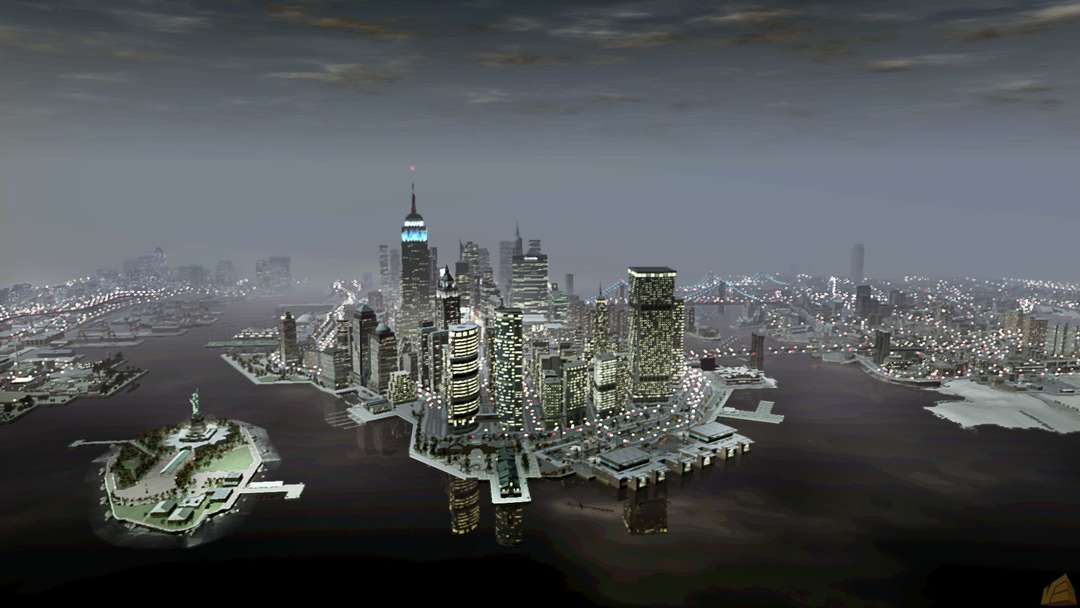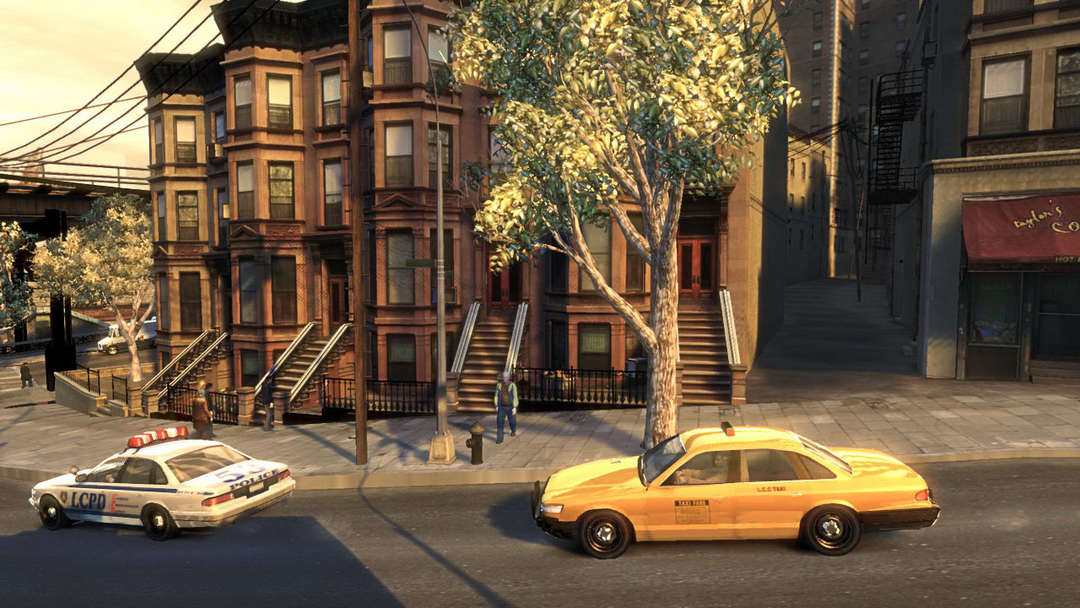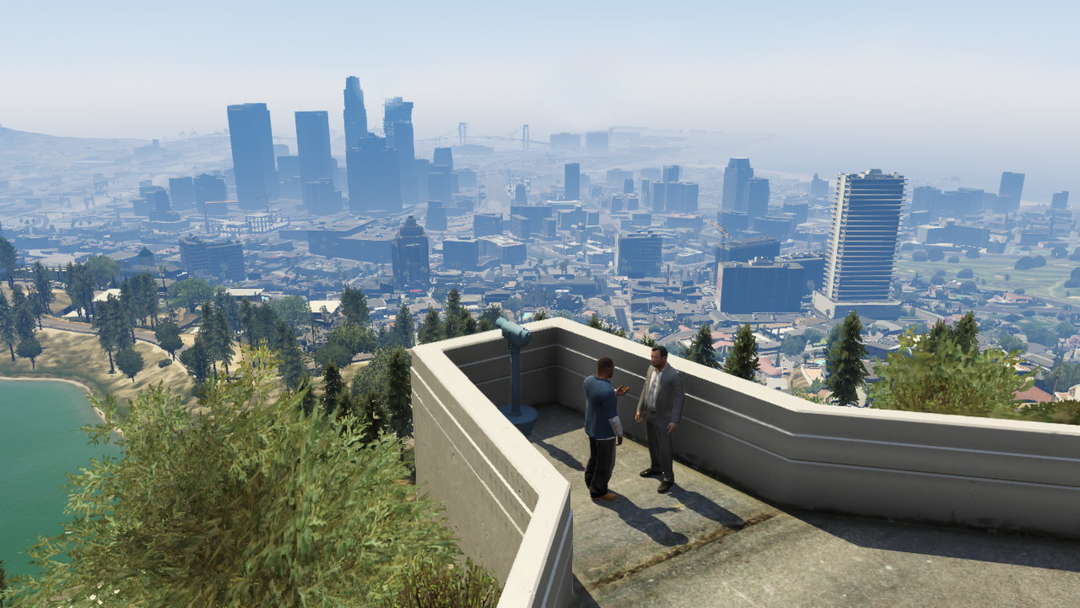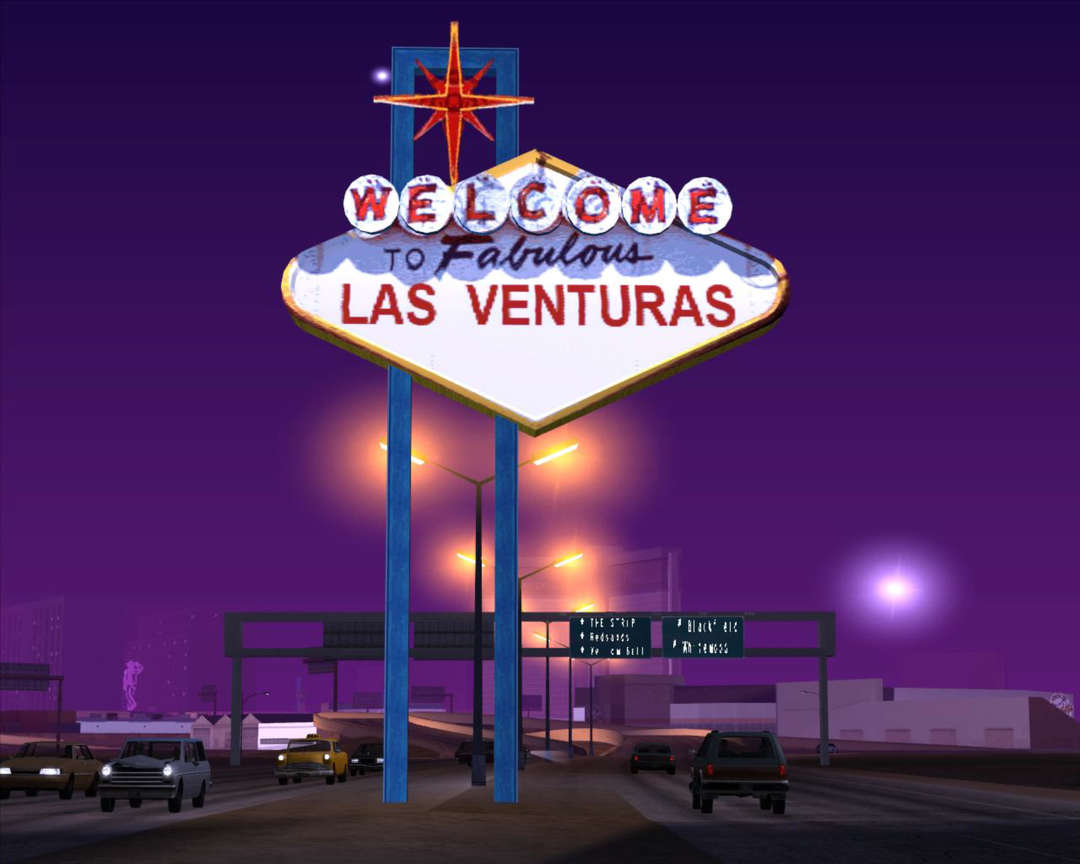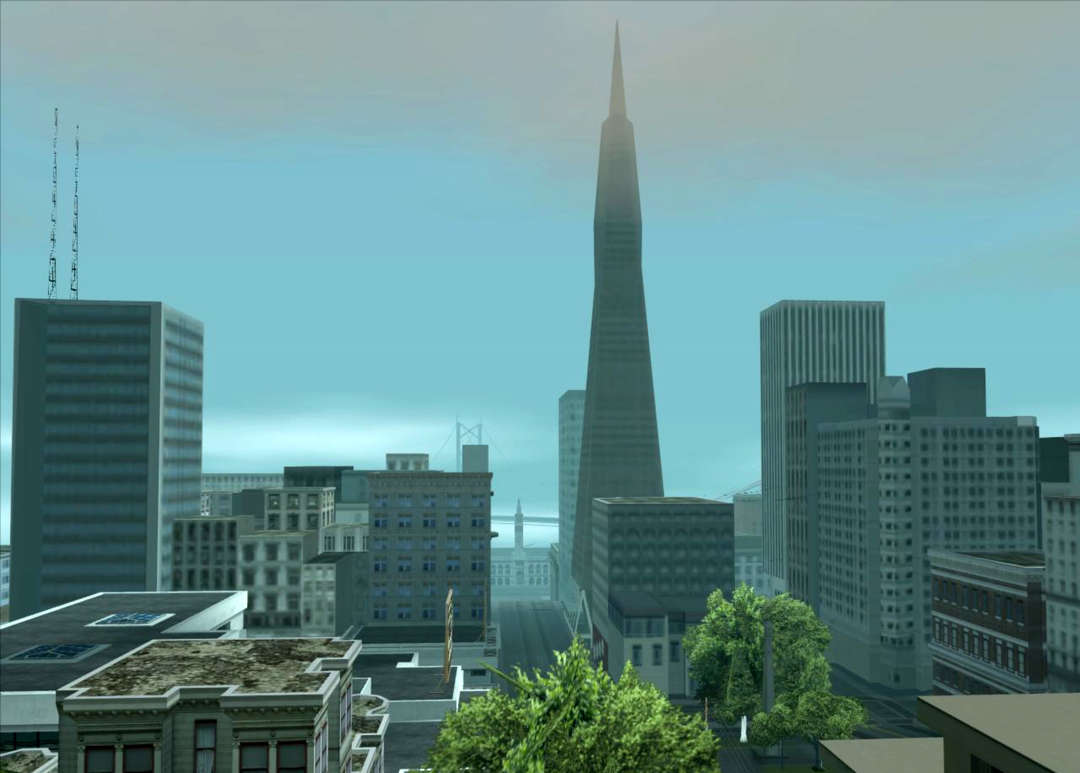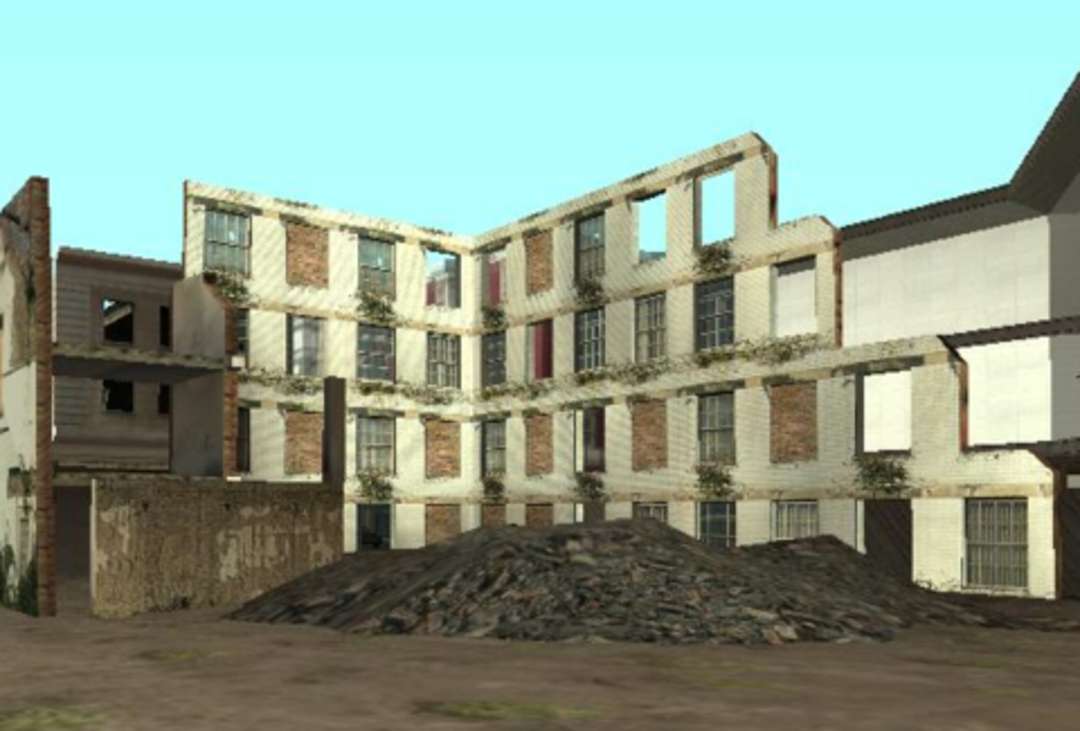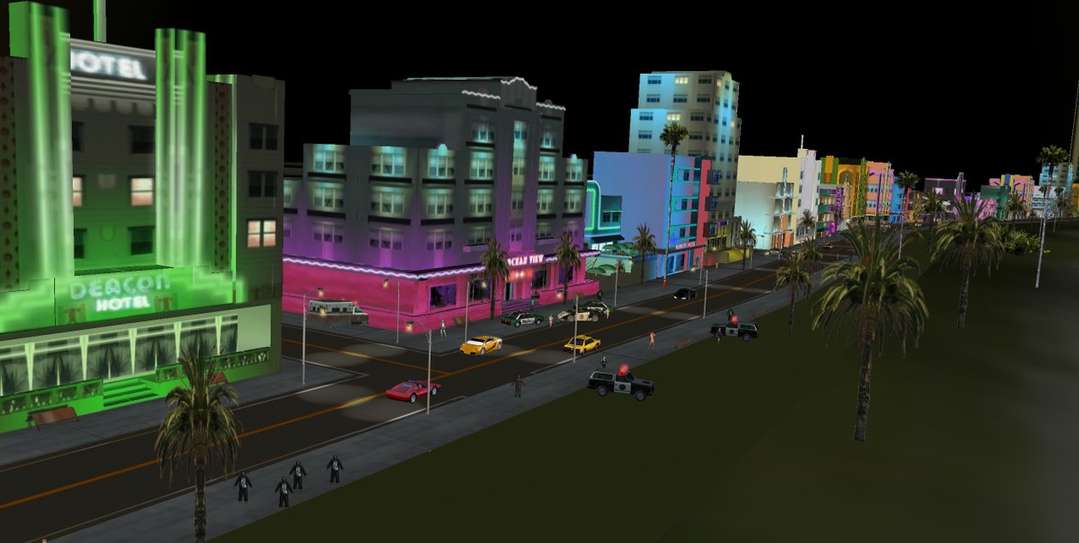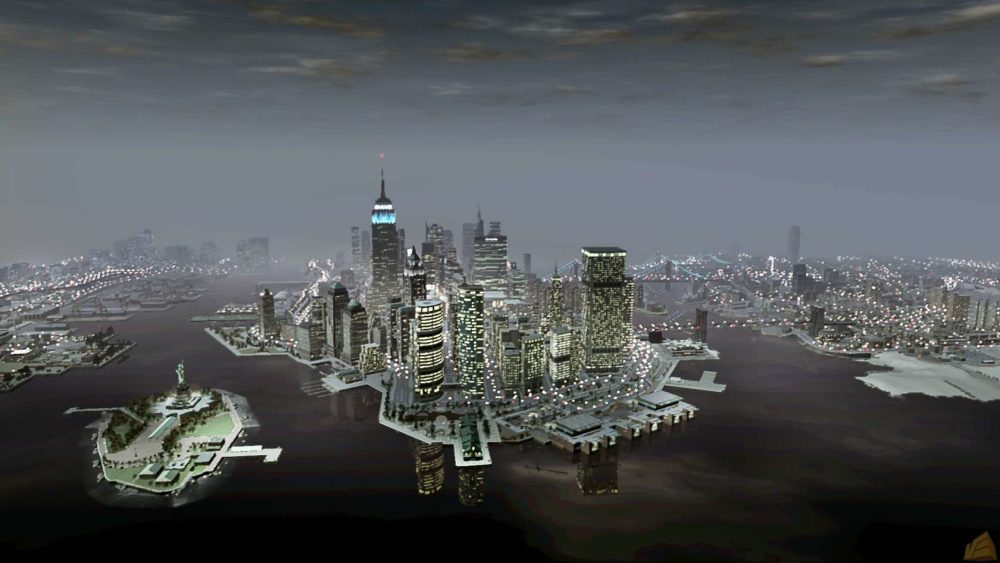
Architectural ensemble says a lot about us, because the buildings that make up a city reflect the attitudes, beliefs and values of the people who live there. It should be no surprise, then, that the popularity of the Grand Theft Auto series of video games — some of the most commercially successful of that medium — rests heavily on its fictional depictions of real cities, a tactic that employs virtual urban design to craft a commentary on contemporaneous urban conditions.
The series’ creators often take this a step further by placing fabricated advertisements, culture and entertainment products in the game’s free-range environments to satirize American society in general (most iterations are set in the US), but the real-world architectural elements chosen for inclusion are particularly notable, as they are carefully considered to convey the specific character of certain cities. Both world-famous landmarks and deep cuts abound — some of which are detailed below, listed by city — but, most importantly, they speak to the capability of virtual environments to be a critical discourse for hashing out the great debates of an urban age.
New York City – Liberty City
Via GTA Wiki
Having been depicted several times across numerous titles, New York City’s environs were the genesis for the entire series. In its first 3D incarnation, the crime and grime of 90s New York, still emblematic for the city upon that game’s release, was depicted frankly and without nostalgia. In its latest version, from 2008, many of the same details previously used to convey blight and decay (aging brownstones, deteriorating ornamentation) are recast as charming character for outer-borough neighborhoods — all that really changed was the lighting.
Liberty City street; via GTA4.net
Keeping pace with the city’s recent development, notable additions to the most recent Liberty City include Foster + Partners’ Hearst Tower and an abstraction of the Time Warner Center — both allusions to the sleek, glassy, monied New York of the 21st century.
Los Angeles – Los Santos
Via GTA Wiki
In its first 3D appearance, this city was permeated with gang culture, and the low-rise, single-family homes characteristic of East and South Central Los Angeles were prevalent. In the latest version, released in 2013, urban reinvestment is evident throughout, and it is worth noting that one of the city’s tallest buildings is still under construction. Based on the Ritz-Carlton recently completed as part of the L.A. Live complex, this tower denotes a recent surge in high-end real estate development in city centers over the last decade — a trend seen across the globe.
Lifeinvader headquarters; via GTA Wiki
Furthermore, the building chosen to house a fake social media enterprise is modeled on a real-life skincare clinic and — besides the face-related metaphor — points to the increasing ubiquity of tech companies in large cities.
Las Vegas – Las Venturas
Via Reddit
The game version of Las Vegas hasn’t been rendered since the early 2000’s, but in this case was modeled after a specific time period, giving its commentary a lasting effect. Seen here in the early 90’s, the city is depicted at the height of its embrace of fantastic escapism in the form of giant, Disney-like themed casinos. Architecturally speaking, this coincides with Vegas’ oft-cited role as an example of postmodern pastiche and includes lampooned versions of The Luxor, Caesar’s Palace and Excalibur casinos, to name a few.
Las Venturas Strip; via GTA Wiki
In the game, the city is paired with a subplot about the corporate takeover of casinos from organized crime, a notable shift in ownership during that era, which in turn stands as its own critique on a concurrent, worldwide corporatization of mass culture.
San Francisco – San Fierro
Via GTA Wiki
For the most part, San Francisco has only been employed in the Grand Theft Auto universe to reflect the iconic qualities the city has long been known for: counterculture history, fog and a beautiful coastal landscape with a relatively dense mishmash of architectural heritage. As it is depicted in the early 90s, San Fierro is also recovering from a recent earthquake, as San Francisco was in the aftermath of 1989’s Loma Prieta quake.
Via GTA Myths Wiki
As such, a noteworthy inclusion beyond landmarks like the ostensibly stable Transamerica Pyramid would be the city’s lingering “damage,” which includes a few empty shells of some monolithic brick buildings and a collapsed stretch of freeway that appears strikingly similar to some of the enduring imagery from that disaster.
Miami – Vice City
via DeviantArt
Set in the 80s, GTA’s rendition of Miami is all about cultural nostalgia. Relying heavily on music and fashion — and made just before the series started exhibiting a preference for explicitly emulating actual buildings — the game lacks high-profile real-world architectural examples, save for a few landmark beachfront hotels. Otherwise, the setting relies on architectural abstraction to convey ambiance.
Downtown Vice City; via GTA Wiki
With a similar geographic layout and density as Miami, Vice City’s strongest comment on America’s tropical metropolis has to do with the longevity of certain cultural relics. Made in 2002, the game is set 15 years prior, and, nearly another 15 years after its release, Miami’s built environment arguably retains the same popular associations it has for decades: neon-bathed art deco and anonymous postmodern high-rises.
Enjoy this article? Check out our architect’s guide to life in video games. Top image: Los Santos in Grand Theft Auto V, via GrandTheftAuto.net

